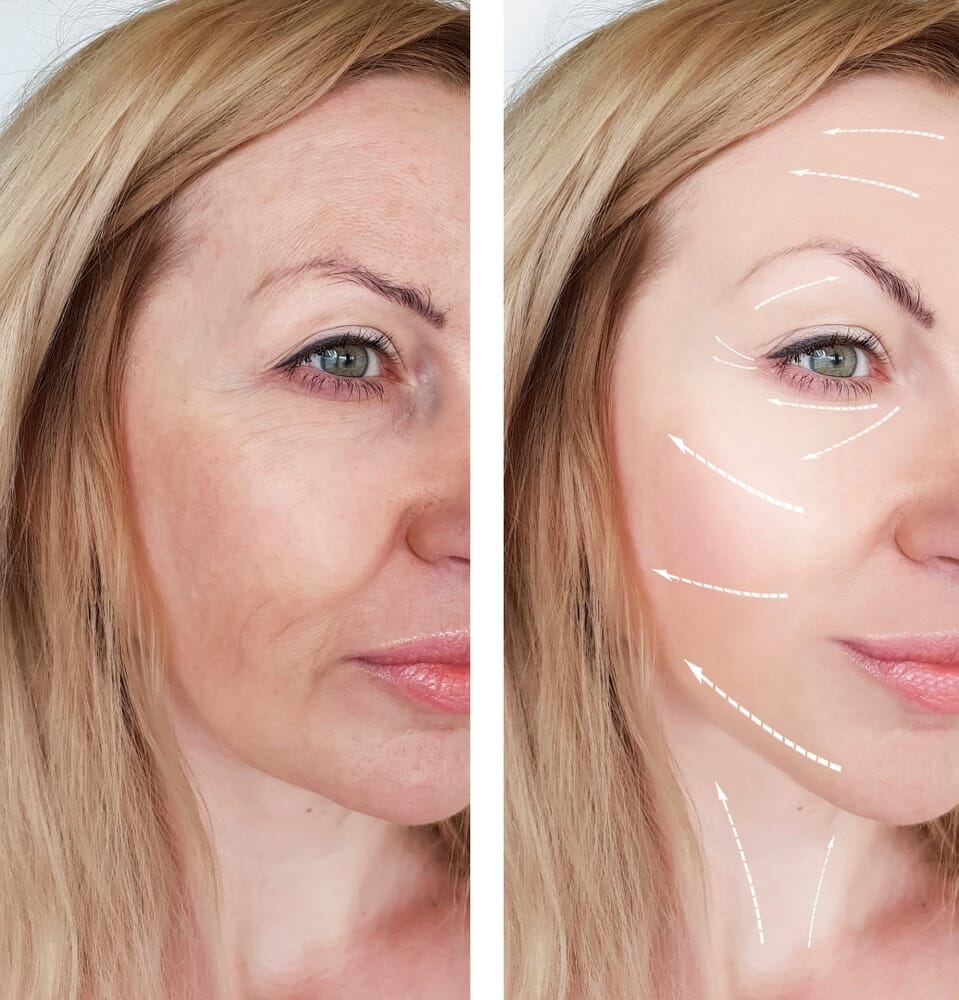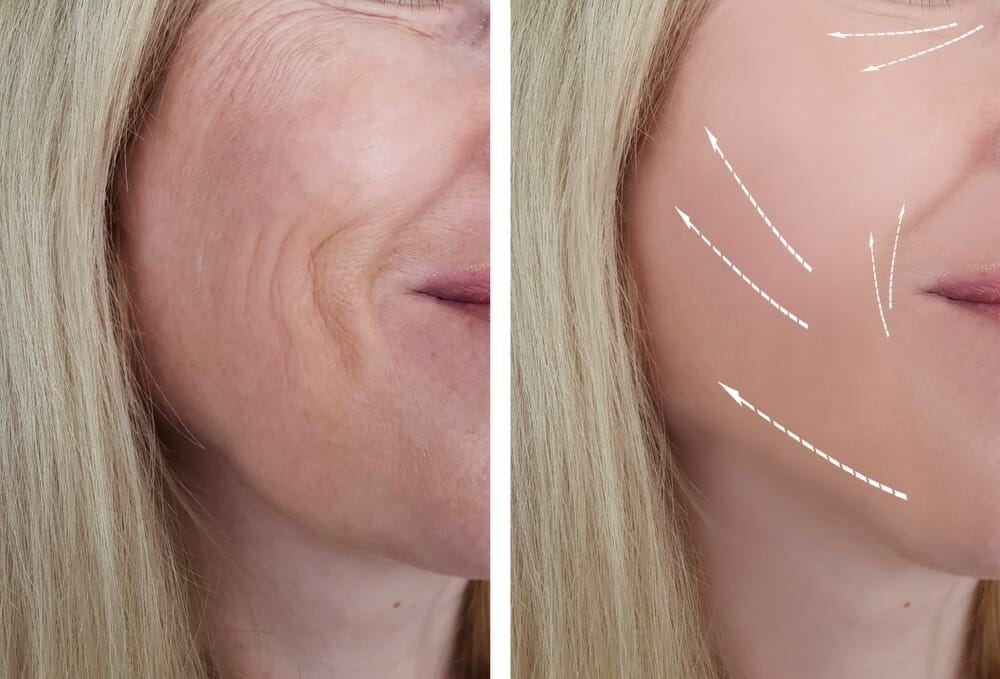Lifting du visage : qu’est-ce que le lifting centro facial ?
Le lifting centro-facial, ou lifting centro-malaire, est l’un des liftings du visage le plus fréquemment réalisé par les chirurgiens esthétiques. Le lifting centro-facial permet d’harmoniser votre visage et de replacer les structures anatomiques dans une position plus jeune. Cette intervention chirurgicale agit sur la partie centrale du visage, en particulier sur le creux des cernes, les paupières inférieures et les pommettes, mais aussi sur les sillons nasogéniens (rides verticales qui partent de l’aile du nez jusqu’à la bouche).
Ces signes de vieillissement donnent au visage un air triste et l’impression d’un regard fatigué. Afin d’avoir bonne mine, pour se sentir mieux dans sa peau ou encore pour rajeunir son visage, de plus en plus de personnes ont recours à ce type d’intervention.
Lifting centro-facial : informations pratiques

L’intervention chirurgicale du centre du visage peut être faite seule, ou en complément d’autres liftings du visage.
Les opérations du visage les plus fréquentes sont :
- Le lifting cervico-facial, qui intervient sur le cou, les tempes et les joues.
- Le lifting centro-facial, qui intervient sur le creusement des cernes, l’allongement de la paupière inférieure et le volume des pommettes.
L’apparition des signes de vieillissement du visage est de plus en plus prononcée après 40 ou 50 ans. C’est pourquoi le lifting centro-facial est davantage pratiqué chez les personnes ayant plus de 40 ans.
Lifting centro-malaire : objectifs et principes
Vous trouvez votre visage disgracieux et vous avez tout le temps l’air fatigué ? Le lifting centro-facial permet de rajeunir votre visage. Cette technique est appréciée par de nombreuses personnes, car elle permet de conserver un visage naturel et harmonieux.
Ce qu’il faut savoir avant l’intervention
La Clinique du Lac prend soin d’étudier les solutions les plus adaptées à vos besoins et à vos problématiques. Pour cela, nous réalisons au minimum deux rendez-vous pré-opératoires. Lors de ces rendez-vous, un praticien vous accueille et vous explique les différentes modalités de l’intervention.
Un rendez-vous avec un médecin anesthésiste sera effectué une à deux semaines avant l’opération.
Afin d’améliorer la cicatrisation de votre peau après l’intervention, nous vous conseillons de ne pas fumer 6 à 8 semaines avant l’acte. Aussi, comme pour toute intervention chirurgicale, nous vous demandons de venir à jeun le jour même et de proscrire la prise d’aspirine une quinzaine de jours avant l’intervention.
Lifting du centre du visage : type d’anesthésie et modalités d’hospitalisation
Il existe deux types fréquents d’anesthésie pour un lifting centro-facial :
- L’anesthésie générale
- L’anesthésie locale approfondie (anesthésie vigile), lors de laquelle des médicaments
L’acte chirurgical est le plus souvent réalisé en opération ambulatoire : hospitalisation avec sortie le jour même, après quelques heures de surveillance. Dans certains cas, l’intervention peut se faire lors d’une hospitalisation de 24 heures, avec surveillance d’une nuit à la clinique.
Lifting des joues et pommettes : l’intervention
Différentes interventions existent pour un lifting centro-facial, que le chirurgien adapte en fonction des besoins du patient.
Une à deux incisions sont généralement nécessaires :
- La première se situe juste en dessous des cils, au niveau de la paupière inférieure, et peut se prolonger vers la patte d’oie (incision palpébrale)
- La seconde incision peut être faite dans la partie chevelue de la tempe.
Une fois les incisions faites, les tissus de la peau sont décollés au raz de l’os afin de pouvoir être remontés vers le haut à l’aide de fils de suspension définitifs imperceptibles. Le chirurgien enlève ensuite l’excès de peau de la paupière inférieure. Cet acte chirurgical dure en moyenne une à deux heures.


